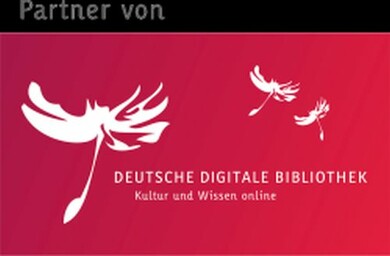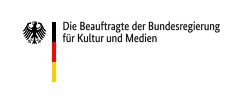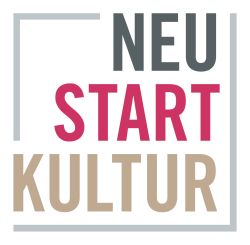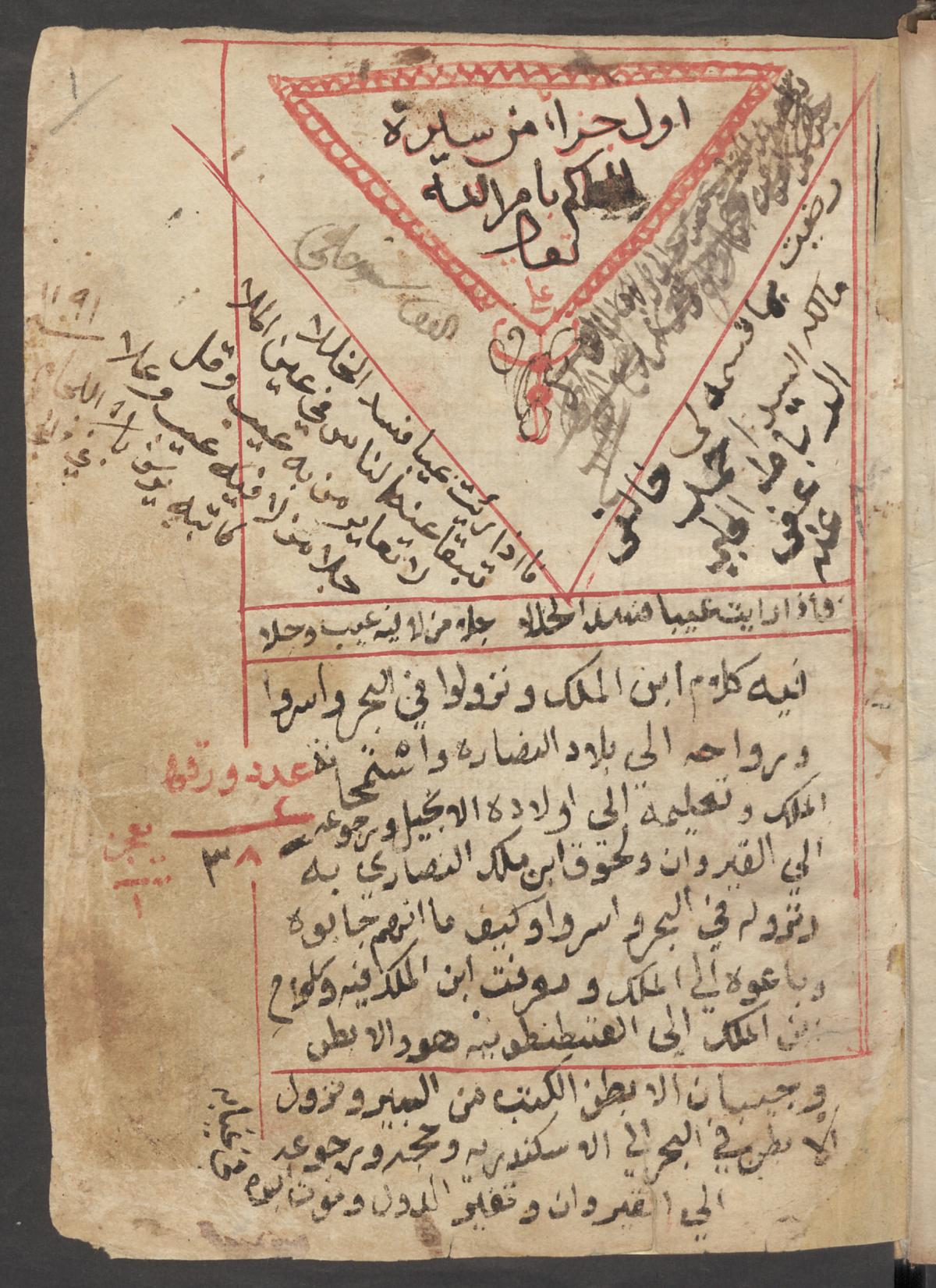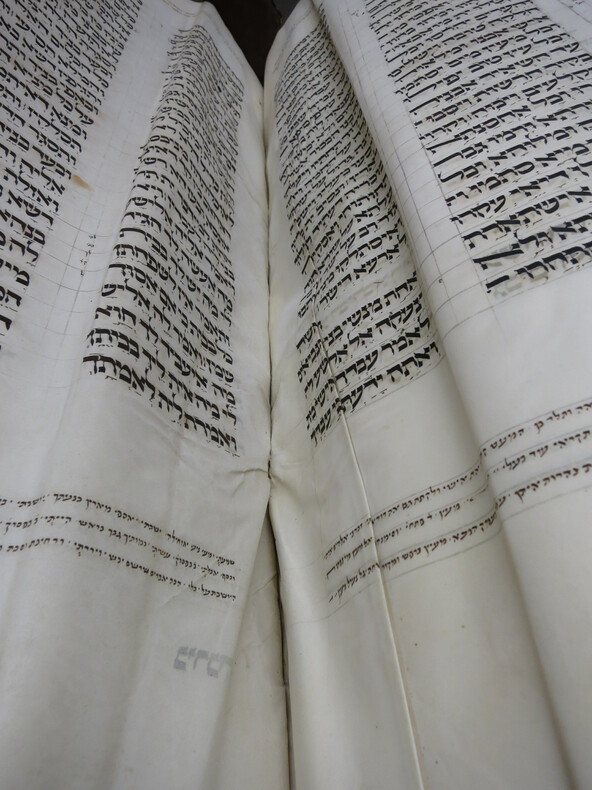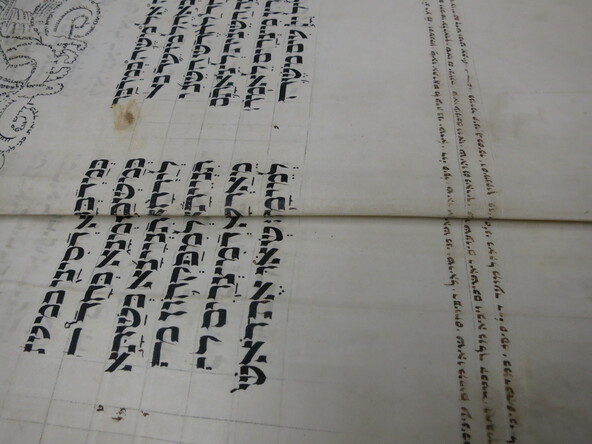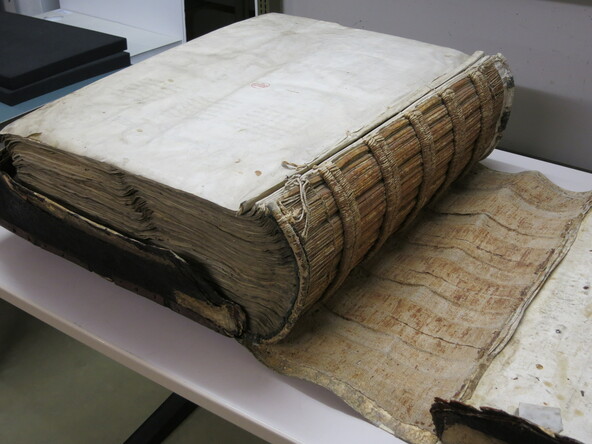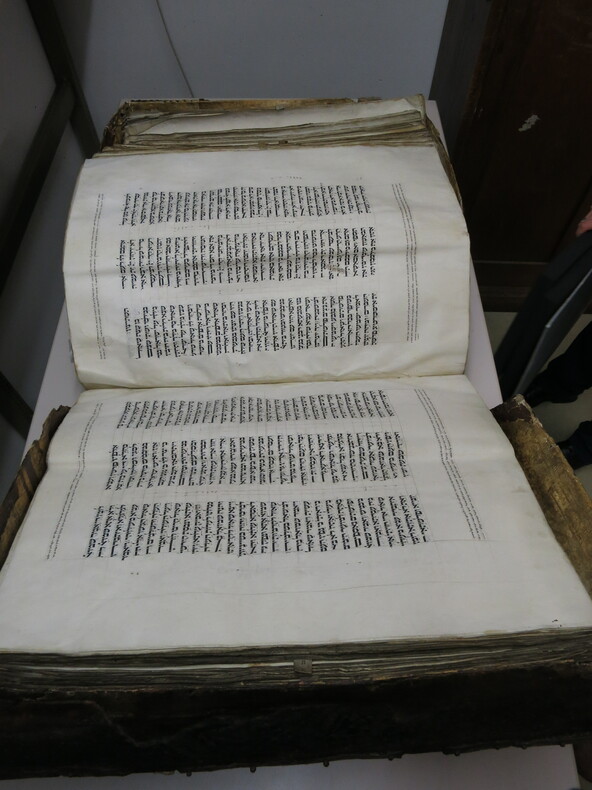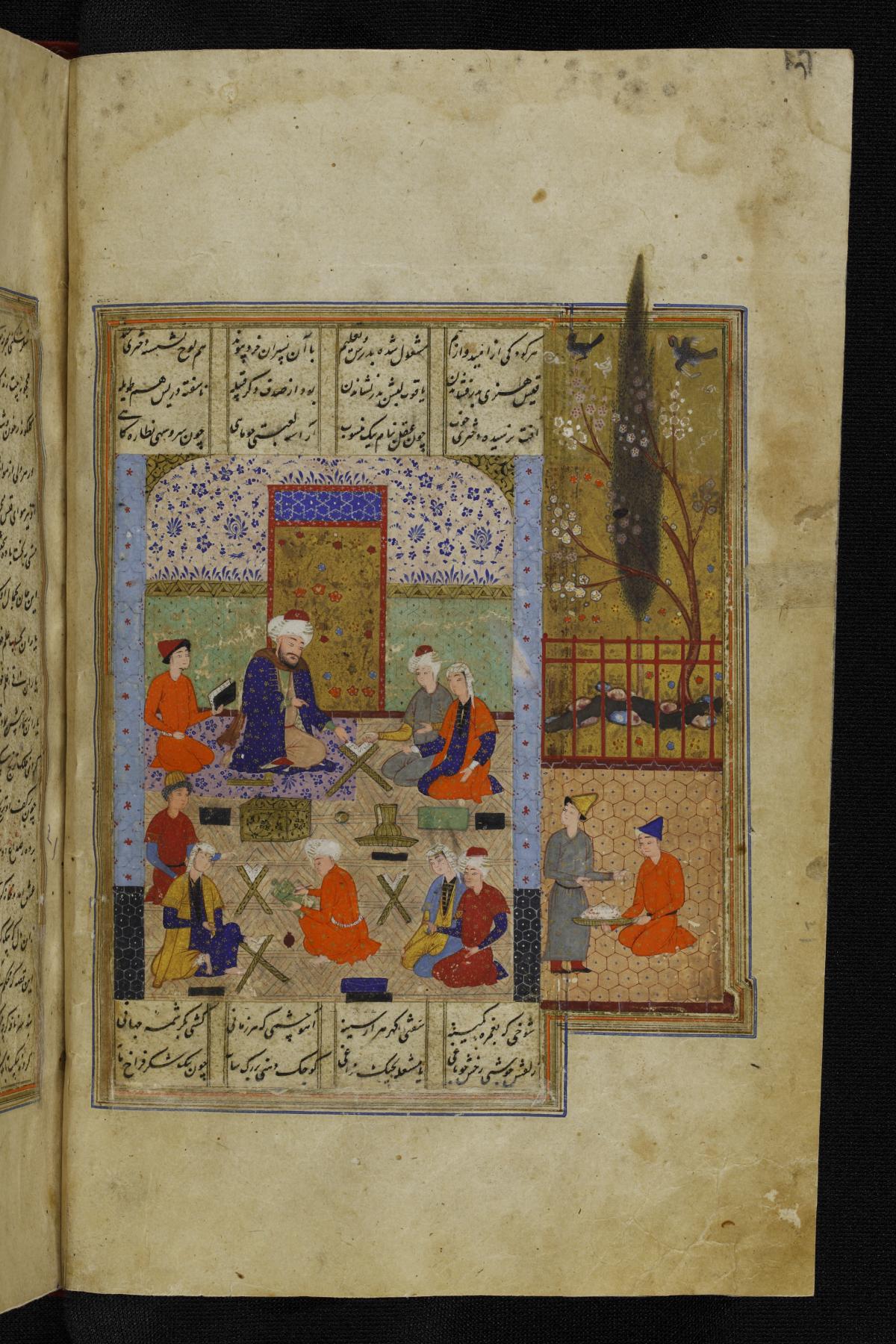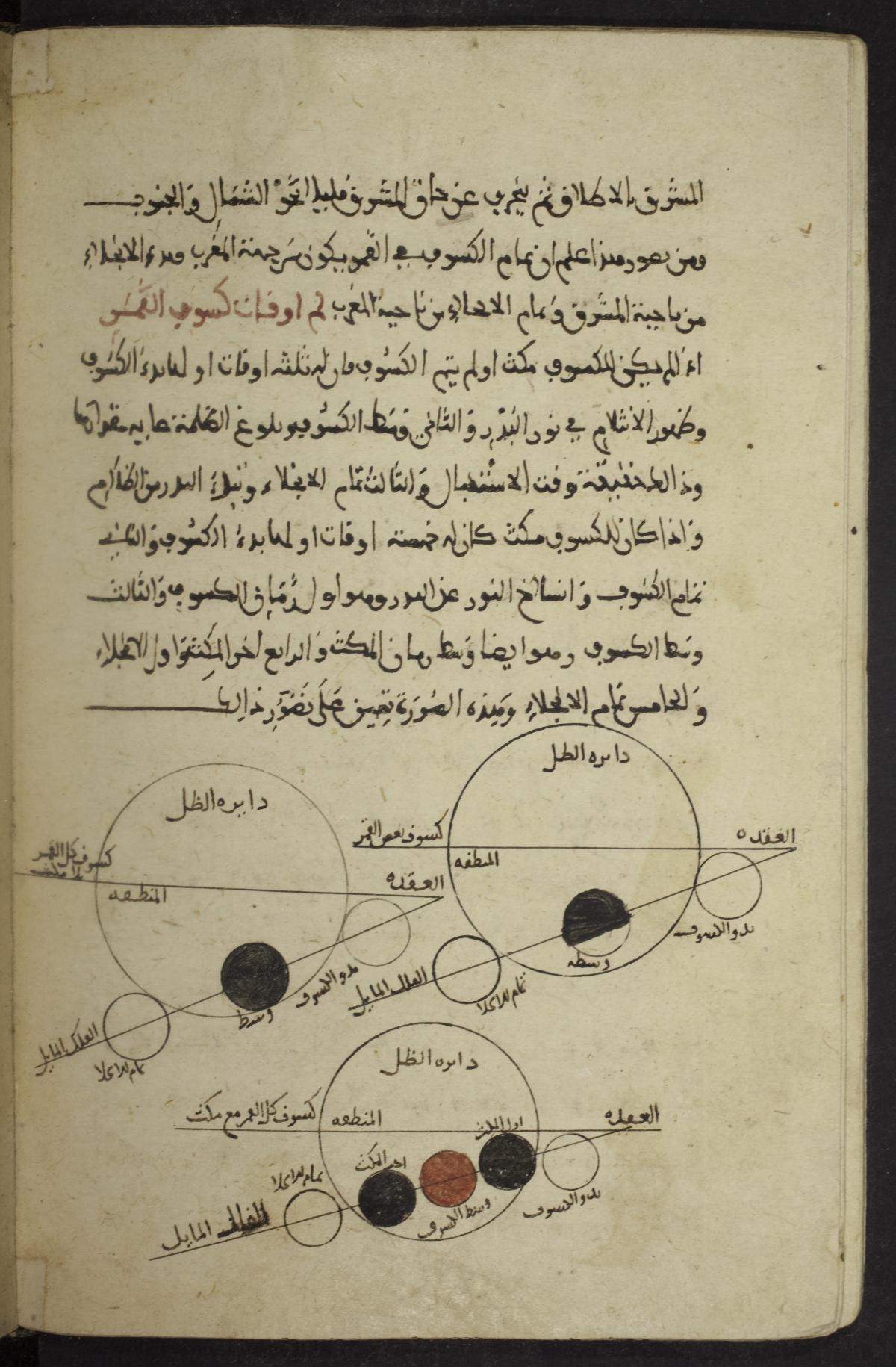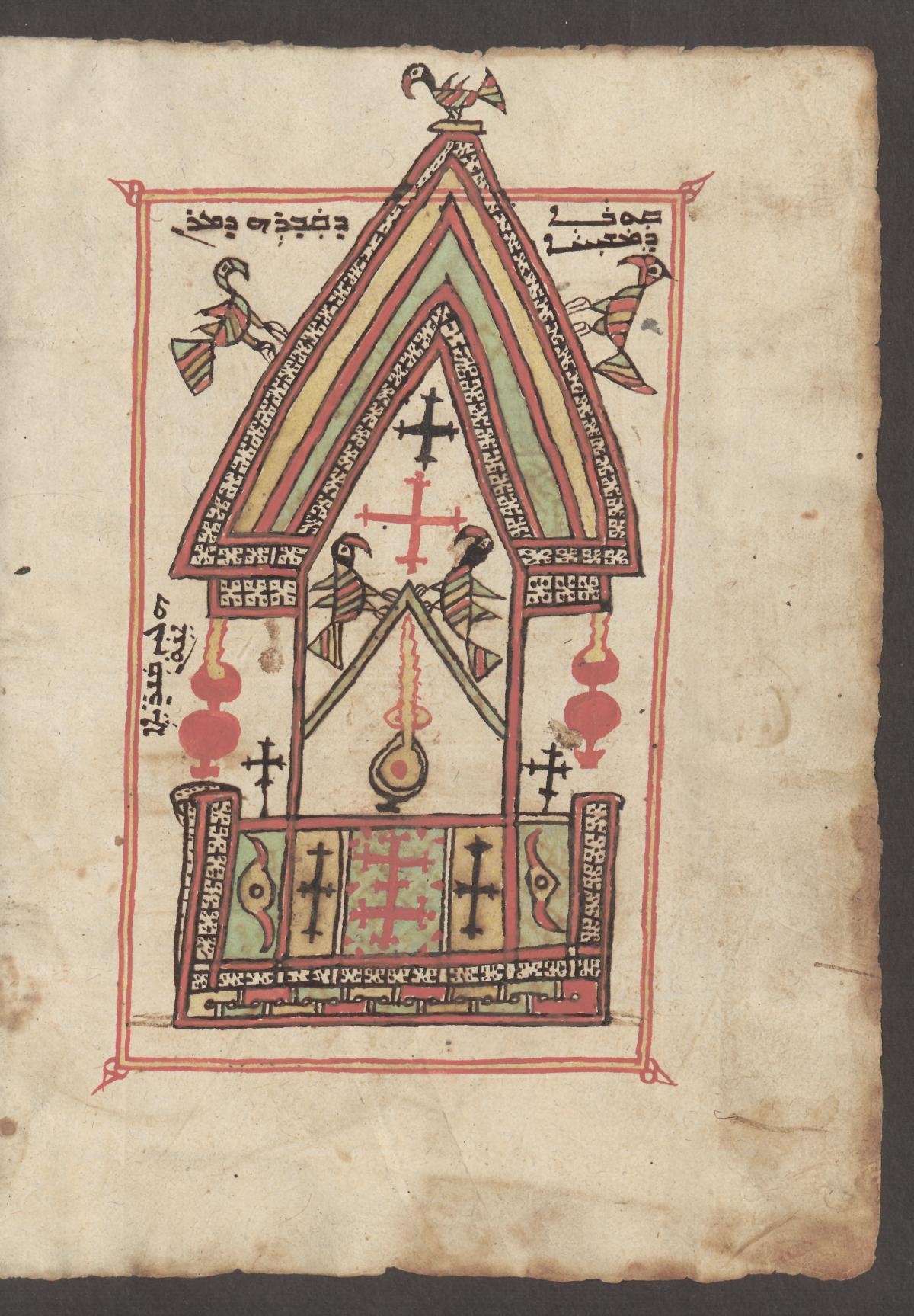Orient
Digitization Projects
On this page we inform you about completed and ongoing digitisation projects. Since 2010, Oriental manuscripts have been continuously digitised at the digitisation centre of Staatsbibliothek zu Berlin with the support of third-party funding as well as through our own resources. In addition, we produce digitised copies in response to orders from users. Currently, 7,250 volumes of Oriental manuscripts are fully digitised (as of April 2021) and most are available in the digital collections. Digitisation of the 40,000 text fragments of the Turfan Collection (deposited by BBAW with Staatsbibliothek zu Berlin) has already been completed.
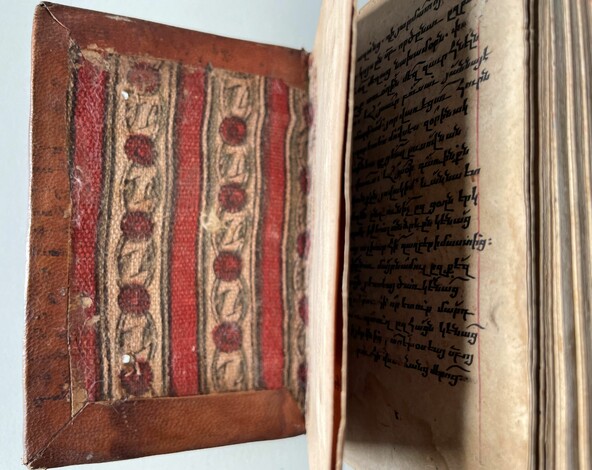

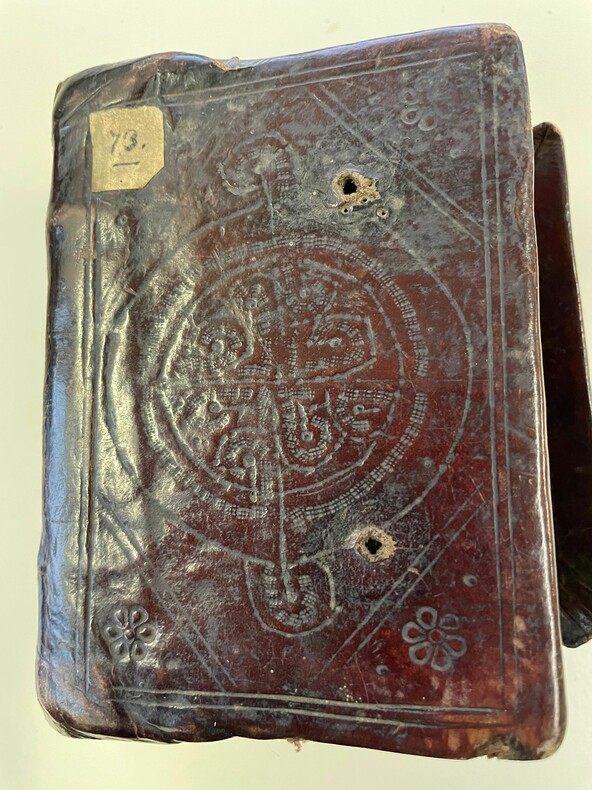
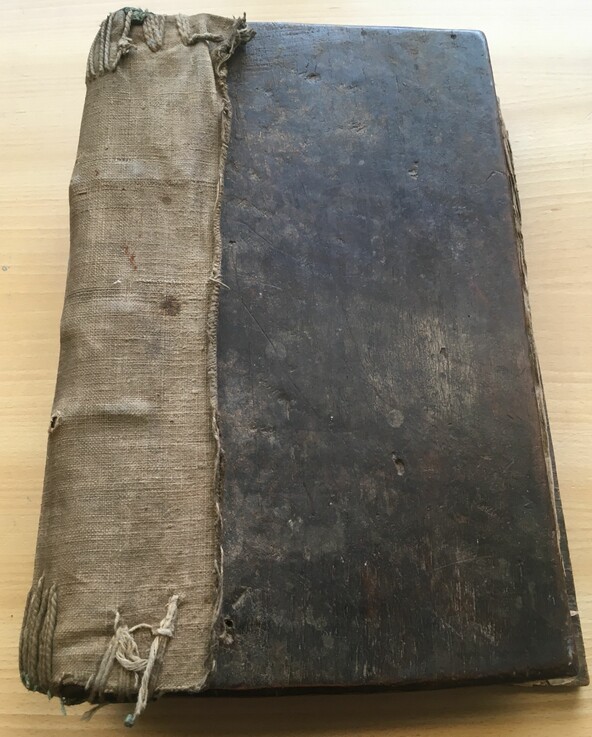
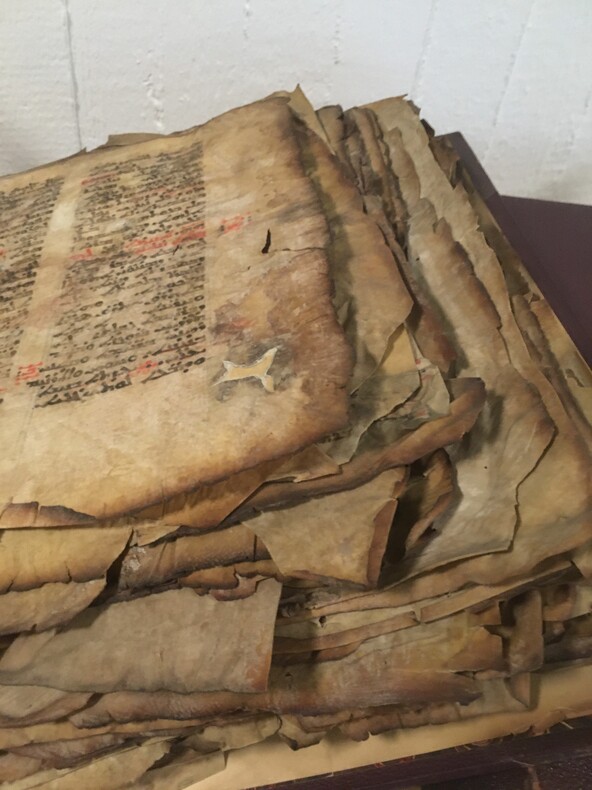
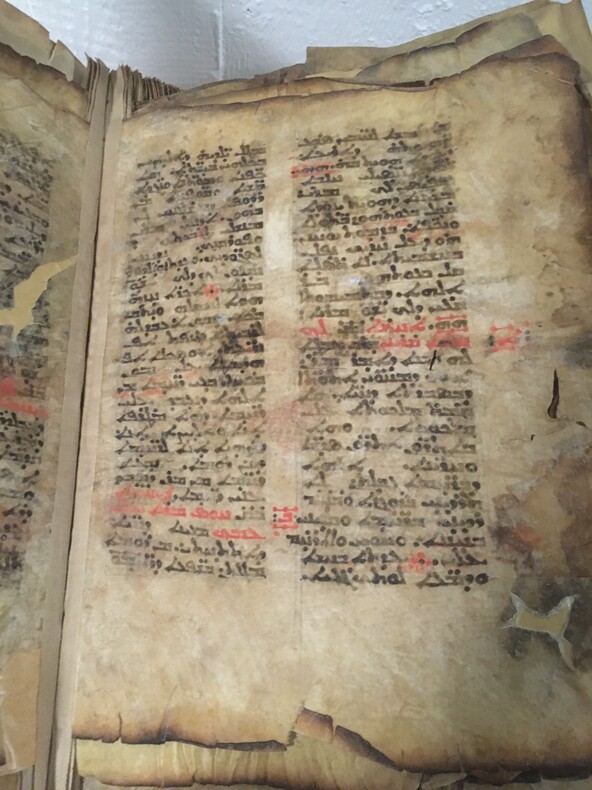
Digitisation of Eastern Christian manuscripts (Armenian-Syriac-Coptic) has started
Since January 2022, the Oriental Department of Staatsbibliothek has been engaged in finalising the digitisation of the 134 Armenian, 111 Coptic and 390 Syriac manuscript holdings. The remaining 62 Armenian, 77 Coptic and 220 Syriac manuscripts from this group that have not yet been digitised will be presented in Qalamos and in Digitalen Sammlungen der SBB with high-resolution images and descriptions. On completion of the project, all elements of these holdings will be fully accessible and catalogued.
The 42,000 Oriental manuscripts at Staatsbibliothek Berlin include the fascinating texts of "People of the Book" that originated in the Near East and North Africa. The number of objects belonging to Eastern Christianity or to communities rooted in Jewish tradition in these regions amounts to about 1,700 volumes. Among these, approximately 1,200 volumes are attributed to various Eastern Christian communities. Languages representing these manuscript traditions include Syriac, Arabic, Armenian, Coptic, Amharic, Old Ethiopian (Geez) and Georgian.

Digitisation of a picture library of the oldest Koran fragments from Sanaa/Yemen (2021)
In 2019, the Oriental Department acquired the pictue library of the Saarbrücken art historian Dr. Hans-Casper Graf von Bothmer. It contains microfilms, color slides and photo prints of the fragments of 926 Koran manuscripts discovered in 1971/72 during restoration work in the Great Mosque of Sanaa.
These Koran fragments are now kept in Dār al-Maḫṭūṭāt ("House of Manuscripts", Sanaa, Yemen). It is one of the most extensive collections of early Qur'anic manuscripts worldwide, which is at the same time the least known and largely inaccessible to research. The fragments are among the oldest Islamic written sources at all and date back to the 7th century.
As part of the German-Yemeni Manuscript Project, the manuscripts were documented, restored and filmed. This project was funded from 1980 to 1997 by the Cultural Preservation Programme of the Federal Foreign Office. As part of the written cultural heritage of mankind, these handwritten testimonies are of great importance to the public interested in cultural history.
Their relevance for Koran research, Islamic studies and Islamic (book) art history can also hardly be overestimated. The collection comprises about 24,000 MF recordings as well as about 5,000 slides and prints. The digitization of the photographic materials has been completed.
Digitisation of Arabic Epic Novels (2020-2024)
In 2020, the digitisation of an important collection of Arabic literature began. As the so-called folk or epic novels were traditionally passed on orally over many centuries, only few works exist in written form. The collection is essential in terms of literary history, but also linguistics, as it includes items in Middle Arabic. Comprising approximately 800 volumes, the majority of these holdings came from the estate of the Orientalist Johann Gottfried Wetzstein (1815–1905) who acquired them in Damascus around 1860. Among the most important works are the ʿAntar-novel, the Sīrat Dhāt al-Himma, the Sīrat al-Malik Baybars and, of course, the Tales from 1001 Nights (Alf laylah wa-laylah). The epic work Sīrat Banī Hilāl about the spread of the Arab Bedouin tribe of Banū Hilāl to North Africa in the Middle Ages is inscribed on UNESCO's Respresentative List of the Intangible Cultural Heritage of Humanity. The volumes are predominantly more recent copies from the seventeenth to nineteenth centuries. Due to their reader and owner entries, they are important sources for researching the reception history of these works as well as valuable records of Arabic book culture.
The digitisation project includes all manuscripts described in Wilhelm Ahlwardt's catalogue "Verzeichnis arabischer Handschriften, Band 8" under the heading "Große Romane." The project is scheduled for completion by the end of 2024.
Digitisation of Hebrew Manuscripts
Digitisation of Hebrew Manuscripts
A generous donation enables the extensive digitisation of Hebrew manuscripts. Scope of the project is the restoration of the Erfurt Bible 1 as well as the digitisation of all Hebrew manuscript holdings of Staatsbibliothek zu Berlin.
The restoration of the Bible Erfurt 1 (Band 1 – Ms. or. fol. 1210)
The Erfurt manuscripts consist The Erfurt manuscripts consist of four Torah scrolls and eleven codices that - with one exception (Tosefta, Ms. or. fol. 1220) - originated in medieval Ashkenaz. The Bible "Erfurt 1" is the world's largest Hebrew parchment manuscript which comprises two volumes of 584 and 484 leaves, measuring 60.5 x 44.5 cm and weighing approximately 50 kg per volume. After the much acclaimed restoration of the severely damaged second volume of the Bible between 1999 and 2007 and the reconstruction of the Old Synagogue in Erfurt, academic research on the Erfurt manuscripts began. Unfortunately, the first volume of the Bible is not yet available for research due to a lack of funds, so that restoration is eagerly awaited. The most serious damage to the parchment manuscript is the deformation of many individual folios, resulting in sharp vertical creases and warping on the parchment parallel to the fold. Work on the text block will start by dry cleaning all individual pages which are particulary soiled at the edges. The next step is to smooth out the major warps and all creases to the best possible extent. To allow on-site work directly in the stitched text block, a stretcher frame adapted to the size of the page must be designed and built. As soon as this device is available, the creased leaves have to be smoothed successively. Prior to this, the creases on each leaf are carefully moistened and then stretched. The subsequent controlled drying smoothes the parchment. The process which will probably involve about 100 of the 585 folios is a time consuming task, as the drying process must take place under tension and no work can be performed on other pages during this stage. Afterwards, numerous smaller tears at the edges have to be secured and the stitching of the first layers must be stabilised or partially reconstructed. Furthermore, the elaborate coffer binding needs to be reinforced. Finally, a special book cradle has to be constructed to enable digitisation and future use without risk to the manuscript.
Digitisation of all Hebrew manuscripts
Almost all Hebrew manuscripts have been digitized and catalogued in Qalamos, soon all of them will be available in the Digital Library of the Staatsbibliothek.
Digitisation of Islamic miniature manuscripts
The Berlin collection of oriental manuscripts comprises about 310 volumes of Islamic miniature manuscripts from the various epochs of Islamic book art. They were made by book artists in Timurid, Safavidi, Ottoman or Mughal Indian workshops. Among them are such outstanding objects as the Berlin Diez albums or the Jahangir album. In a project made possible by own funds, these were completely digitized in 2013/2014. In addition to digitization, special attention was paid to description of the miniatures. In order to meet the special features of the materials, a module for book art was developed for the manuscript database "Orient-Digital", now Qalamos, in which 8,200 miniatures, illustrations and book decorations are now listed and which have been linked to the digital images. The book art entries can be searched via various filters, for example by type (calligraphy, illumination, illustration), by motifs as well as by a full-text search. The basis for the indexing were the volumes "Illuminated Islamic Manuscripts" (Stchoukine et. al. 1971) and "Saray-Alben: Diez'sche Klebebände aus den Berliner Sammlungen" (İpşiroǧlu 1964) published in the series Verzeichnis der orientalischen Handschriften in Deutschland (VOHD).
The digitization project was accompanied by extensive conservation measures in the restoration department of the Staatsbibliothek zu Berlin, which were carried out partly before and partly after digitization. A detailed overview of the mechanical and chemical damage patterns and their treatment in the project can be found here. [p. 31.]
Yemeni manuscripts
In a digitization project in cooperation with the NEH-funded portal "The Zaydi Manuscript Tradition" under the direction of Prof. Sabine Schmidtke (Institute for Advanced Study, Princeton), 214 Yemeni manuscripts of the Staatsbibliothek zu Berlin were made available in full text. With the completion of the project in December 2019, all Arabic manuscripts from Yemen have been digitized – exactly 571 works in 351 volumes.
They can be accessed via the Digitised Collections of the Staatsbibliothek and the project portal. An in-depth indexing of the materials can be found in the database of oriental manuscripts of the Staatsbibliothek zu Berlin Qalamos.
The collection of Yemeni manuscripts at the Staatsbibliothek zu Berlin initially comprises 264 volumes, which the South Arabian explorer Eduard Glaser (1855–1908) brought back from his first two expeditions and sold to the Royal Library in 1884 and 1887. Manuscripts from Yemen can also be found in the Landberg collection, the collection of travel photographer Hermann Burchardt (1857–1909) and in many other holdings. Most recently, in 2018, the collection was expanded through the purchase of 14 Yemeni codices via the antiquarian bookshop Bernard Quaritch, London.
Cf. Blog and Christoph Rauch: Alte Arabische Texte aus entlegenen Bergdörfern
Digitisation of Arabic manuscripts ISMI Project (2010 to 2013)
As part of the project "Islamic Scientific Manuscripts Initiative (ISMI)", in cooperation with McGill University (Montreal), the Max Planck Institute for the History of Science (Berlin), about 500 volumes of Arabic manuscripts from the Berlin State Library from the fields of natural sciences, medicine and philosophy were digitized between 2011 and 2012. The works were catalogued and presented in the associated project database, but can also be viewed via SBB's Digital Collections (digital copies) and the Qalamos database (metadata).
Between 2012 and 2014, 1,800 Islamic, predominantly Arabic, manuscripts from the Berlin collection were digitized with the support of the Juma AI-Majid Center for Culture and Heritage in Dubai. Rare and older copies of various fields of knowledge from the catalogues of Wilhelm Ahlwardt (Arabic) and Wilhelm Pertsch (Persian) were selected for digitisation.
Zwischen 2012 und 2014 konnten 1.800 islamische, überwiegend arabische, Handschriften aus der Berliner Sammlung mit Unterstützung des Juma AI-Majid Center for Culture and Heritage in Dubai digitalisiert werden. Für die Digitalisierung ausgewählt wurden seltene und ältere Abschriften verschiedener Wissensgebiete aus den Katalogen von Wilhelm Ahlwardt (Arabisch) und Wilhelm Pertsch (Persisch).
As part of the current DFG project "Orient-Digital", the metadata of the digitized manuscripts are recorded electronically. This means that the digital copies (several hundred volumes) of this project, which are not yet available in the Digital Collections, will soon be provided with extended structural data and will be available online.
Written traditions in the Near East
With the financial support of the Kuratorium Preussischer Kulturbesitz, a selection of 220 oriental manuscripts was digitized in 2016/2017, illustrating the diversity of religious developments and intellectual trends in the Middle East and North Africa.
Mit finanzieller Unterstützung des Kuratoriums Preußischer Kulturbesitz konnte 2016/2017 eine Auswahl von 220 orientalischen Handschriften digitalisiert werden, die die Vielfalt der religiösen Entwicklungen und geistigen Strömungen im Vorderen Orient und Nordafrika veranschaulichen. Manuscripts in Turkish, Armenian, Ethiopian, Coptic and Syrian have been digitized with the aim of increasing the visibility of this diversity on the Internet and exploring new approaches to mediation. The digitization was therefore in the context of the development of a media concept for the Pergamon Museum.
Digitisation of the Turfan Collection
The Turfan collection of the Berlin-Brandenburg Academy of Sciences and Humanities as a deposit at the Oriental Department of the Berlin State Library includes about 40,000 fragments of oriental manuscripts and block prints, which were found at the beginning of the 20th century in the Turfanoase and the adjacent areas (today: Xinjiang-Uighur Autonomous Region, PR China) and the majority of which originate from the second half of the 1st millennium AD. As part of the three-stage DFG project "Digitization of Old Turkish, Iranian and Mongolian Turfan Fragments", a total of 14,480 fragments were digitized from October 1997 to July 2005. On November 1, 2005, the two-stage DFG project "Digitization of the Chinese, Tibetan, Syrian and Sanskrit texts of the Berlin Turfan Collection" was launched. The second stage of this project, which dealt with digitization, archiving and internet presentation in database format of the Syrian and Sanskrit fragments of the Berlin Turfan Collection, was completed on 31.12.2012. In accordance with the mandate of the DFG, the digitisation of the entire Turfan text collection of the BBAW was completed within the framework of this subproject. In addition to the language groups mentioned in the title of the subproject, other smaller collections, such as Xixia, Manchu and Kharosthi, were digitized and incorporated into the IDP database. The digitisation project was carried out in cooperation and with the support of the International Dunhuang Project (IDP) (London, British Library).
Currently, a migration of the existing metadata from the IDP database to the Portal of Oriental and Asian Manuscripts, which is currently under construction, is taking place. A project to migrate all digital copies to SBB-PK's Digital Collections is also in preparation. At the present time, the digital copies can be viewed via the following pages:
Shelf-mark groups: Ch/U, U, Mainz, M, n, So, Ch/So, KS, TS, bs, bi, h, np, Ps, MongHT:
http://www.bbaw.de/forschung/turfanforschung/dta/index.html
Shelf-mark groups: Ch, SHT, THT, TibHT, SyrHT, Xixia, Mandschu:
Shelf-mark groups: THT:
http://titus.fkidg1.uni-frankfurt.de/texte/tocharic/tht.html
